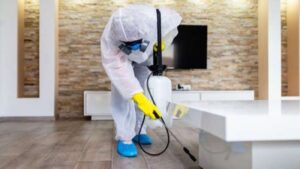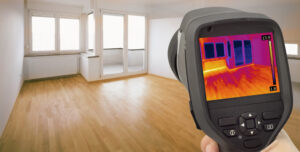Mold Removal Process Dollard Des Ormeaux
Finding mold in your house or company may be frightening. Mold can be identified by discolored walls, stains on ceilings, and a musty, odorous odor. Contact GTA Restoration Services if you feel your property has a mold contamination problem. We are a registered and insured mold removal business in Dollard-des-Ormeaux that offers mold inspections, mold testing, mold removal, and black mold removal services to residential and commercial clients. We give free mold assessments and transferable certifications for mold treatment to new property owners.
Mold has had its fifteen minutes of fame in recent years. Though the buzz has subsided, mold and mold removal in homes remains a critical concern. Customer complaints necessitate a quick response strategy, both to clear up the mold problem and to demonstrate to consumers that a professional house builder is concerned about their health and safety, as well as the durability of their property. Mold reproduces by releasing reproductive cells or spores into the atmosphere. Mold may spread and thrive everywhere in the home as long as moisture and oxygen are available. Spores are undetectable to the human eye. Mold may grow on walls, insulation, tile, textiles, and wood, among other things in Dollard Des Ormeaux.

Steps to follow for mold removal in Dollar des Ormeaux
We follow these steps to remove mold in Dollar des Ormeaux:
Learn how moisture affects the development of mold in Dollard Des Ormeau takes more than a simple visual inspection of what is on the walls or in a corner to determine the extent of mold formation. Mold could be an unnoticed guest that spreads behind and around what you initially observe. Such craftiness requires a curious mind.
- Recognize that any development of mold is brought on by a water or moisture issue. Second, learn how moisture enters a home and where it originates from to become a moisture master. The end goal of these two phases is for warranty agents to locate a moisture source and use its location to assist in identifying all mold development, not just that which is immediately apparent.
- Formulate a plan to remove the mold and keep track of the issue.
- Before starting mold cleanup and eradication, record the mold situation in text, images, and video. The remediation plan will typically address issues like when work will start, when work will be finished, who will be doing the remediation, any testing that needs to be done, and whether homeowners will be temporarily relocated. The warranty team supervisor will use the documentation to create the remediation plan.
- Over time, the data could help your business reduce liability or identify broader mold growth tendencies.
Remediate mold contamination
Mold removal and remediation will always entail cleaning up existing mold while minimizing exposure to oneself and others, as well as preventing future development by treating the moisture source. Determine if you’re working in an area the size of a whole sheet of drywall based on your contamination calculation. If this is the case, you will be following the rules for remediation levels 1 and 2. Level 1 remediation is utilized for tiny, isolated regions of mold up to 10 square feet in size, whereas Level 2 remediation covers square footage ranging from 10 to 30 square feet in size.
Determine the level of mold infestation
Mold does not always develop in the same place, so you must determine how much pollution you are dealing with. The level of the contamination will influence how you handle mold eradication and cleanup. Mold removal aims to clear up mold that has grown within the property while avoiding exposing occupants to huge concentrations of mold.

The Mold cleanup Process
The cleanup procedure for Level 1 and Level 2 mold treatment is the same and consists of the following steps:
Resolve the water issue. This will assist to limit the growth of new mold spores.
Seal off the hazardous area. For both floors, close all doors and windows between the contaminated space and the rest of the house. Cover all entrances and other openings with 6 mm polyethylene sheeting for Level 2 cleanup. Duct tape any seams of the sheeting and slide gaps in the sheeting to access the polluted area.
Eliminate dust. Mist the polluted regions to do this.
Remove all materials. Remove any moist or moldy porous materials. If you are unsure about which things to remove, consult with us.
Sort things into plastic bags. All moist and moldy objects should be discarded in plastic bags at least 6 mm thick, double-bagged, and tied closed. After wiping the exterior of the bags with a moist cloth and detergent solution before leaving the contaminated area, the bags can be disposed of as ordinary garbage.
Clean. Nonporous moldy substances and wood surfaces must be cleaned. Clean all moldy surfaces with a wire brush before wiping the area off with disposable wipes. To dispose of wipes like ordinary garbage, place them in 6 mm polyethylene bags, double-bag them, and knot them closed. Finally, scrub any moldy surfaces with a moist cloth and detergent solution until all mold is eliminated, then rinse with clean water.
Clean up the damaged area and leave. At this stage, the Level 1 procedure differentiates from the Level 2 method. Clean using a moist cloth and/or a detergent solution for Level 1. Level 2 necessitates vacuuming all surfaces using a HEPA vacuum, followed by cleaning all surfaces with a moist cloth and/or mop and detergent solution. Wipes should be discarded in the manner specified above.
Check for visibility. All places should be clearly clean and devoid of contamination and debris no dust or dirt equals no mold.
Dry. Drying cleaned materials allows residual moisture to evaporate. Use fans, dehumidifiers, or elevate the interior air temperature to hasten the drying process.
Replace. All relocated materials should be replaced or fixed. To ensure that the remediation strategy is followed, refer to it during the remediation process. If more mold is found during the cleanup, the warranty supervisor should amend the plan. Many builders use outside mold removal companies to clear up contaminated areas larger than 30 square feet. In this instance, you and your team will shift from doing the mold cleanup to overseeing a skilled contractor. It is beneficial to have a broad awareness of the necessary processes that an outside firm should follow.
Determine whether or not the mold remediation was successful. Just though the mold is gone and there is no dirt or dust on the floor doesn’t imply you’re finished. The final stage is to judge whether or not your cleanup efforts were successful. While the last stage is a matter of discretion, there are certain possibilities and suggestions to consider.
Tips to ensure cleaning efforts in Dollar des Ormeaux
In Dollar des Ormeaux these guidelines are:
The moisture issue has been resolved. Verify this by returning to the home soon after remediation there should be no signs of recurring water damage.
- No obvious mold, mold-damaged items, or musty smells.
- Homeowners should be able to occupy or re-occupy the home without experiencing physical symptoms or aggravating health complaints.
Depending on your firm and the specifics of a mold problem, an environmental testing company may undertake extra testing following the clean up to ensure that all mold has been eliminated. The key to preventing mold is to adopt a complete moisture control plan. By doing it correctly the first time, any liability and health risks from mold may be greatly reduced. Clean up must be immediate and thorough, using a technique similar to the stages outlined above. The major failing in responding to homeowner concerns is simply because builders do not reply quickly enough, or with the emphasis that the matter is potentially significant.
